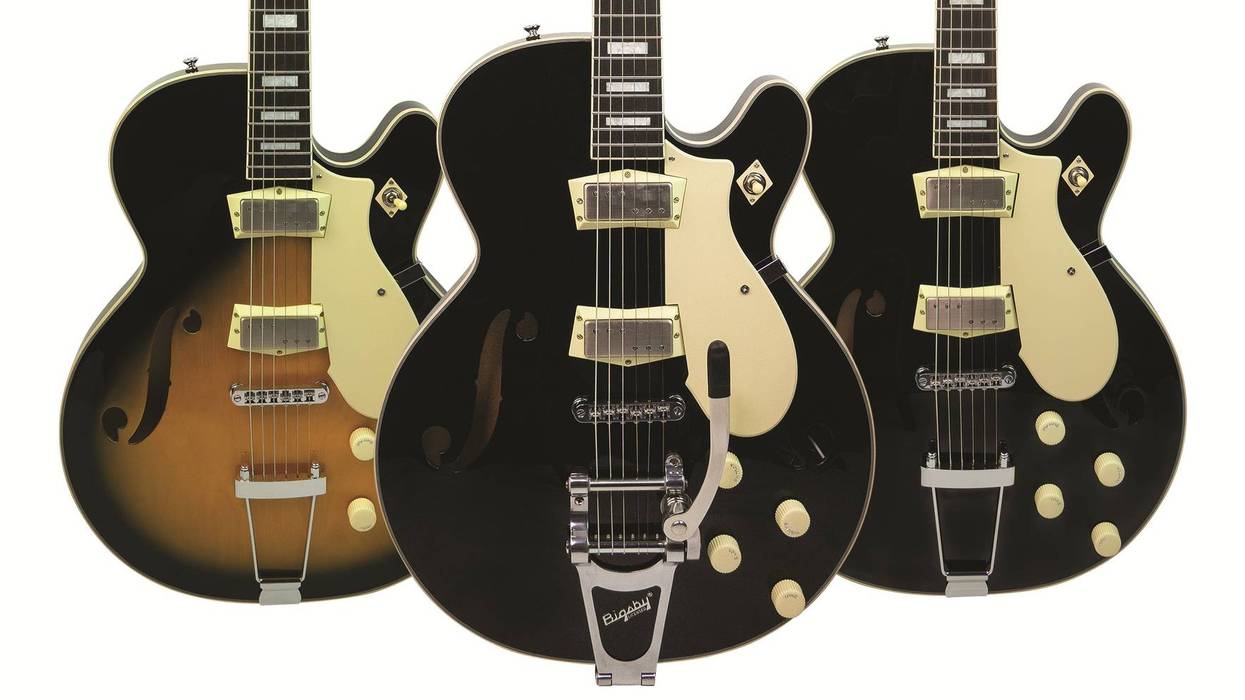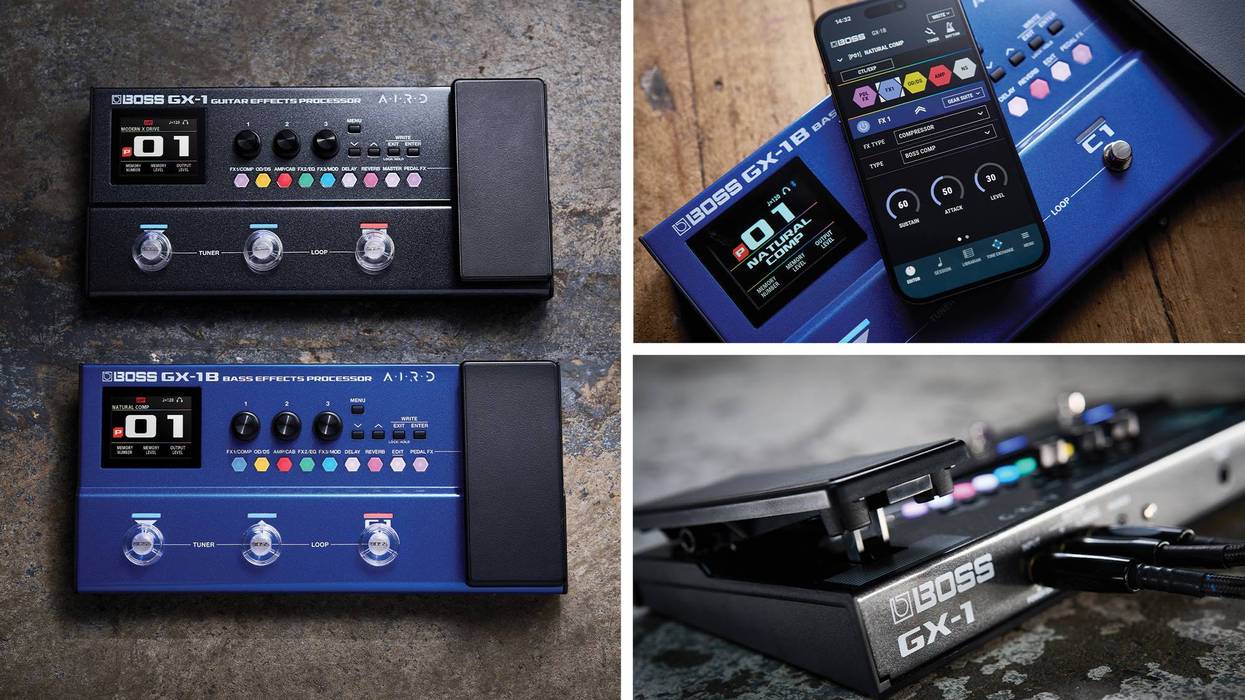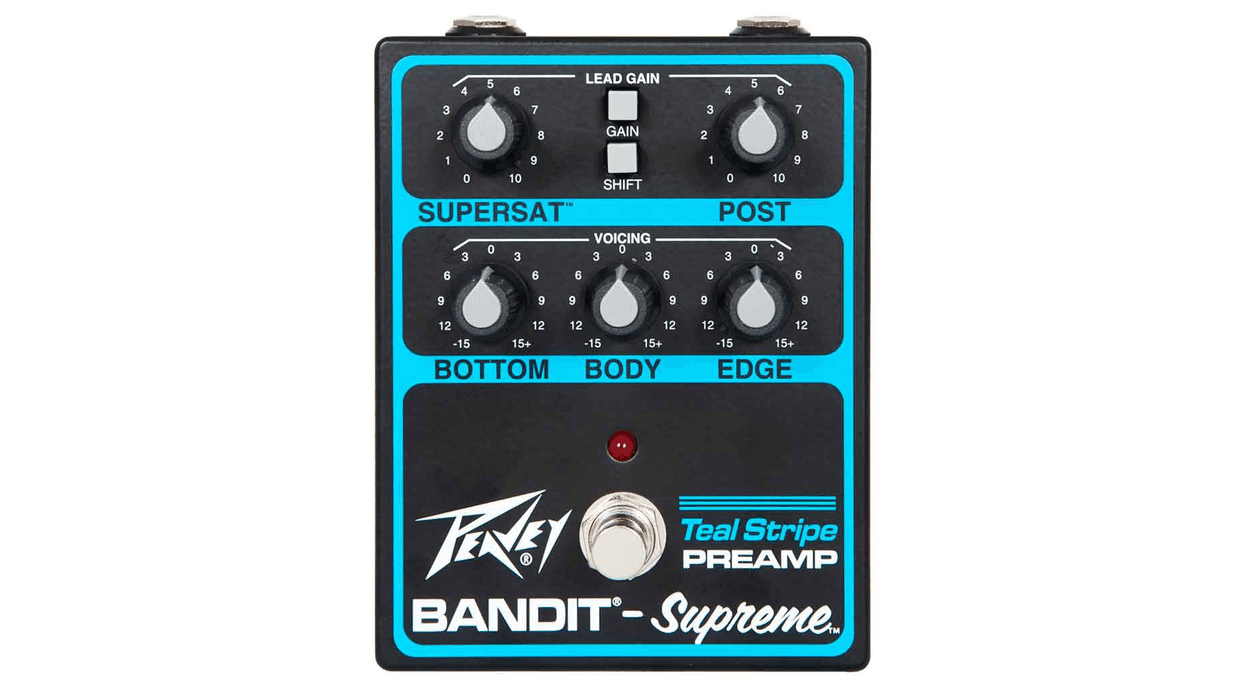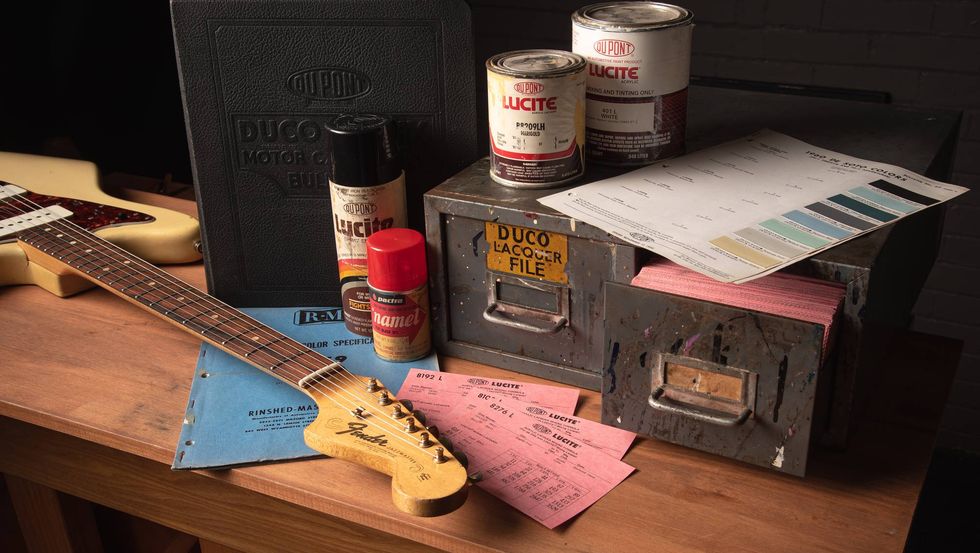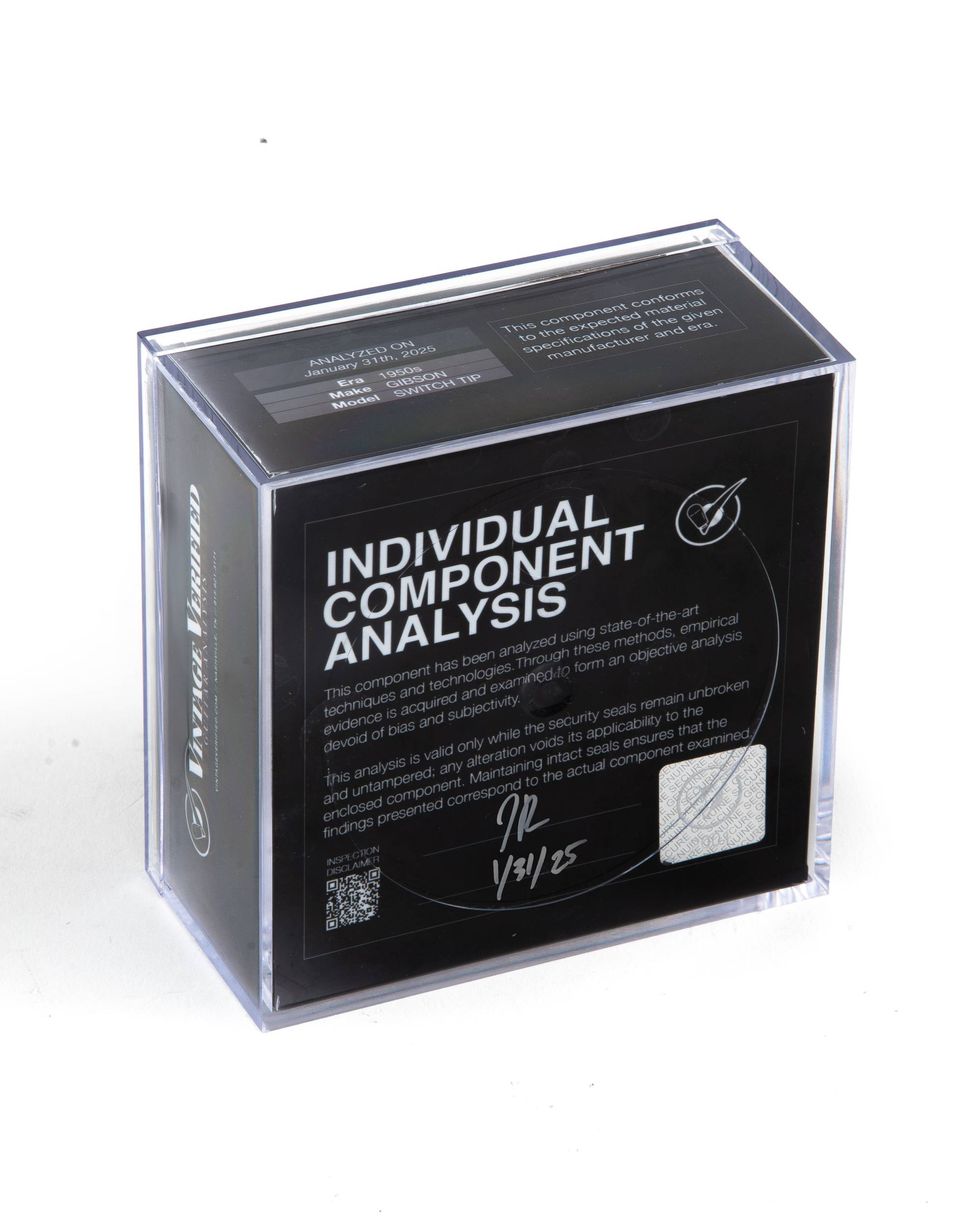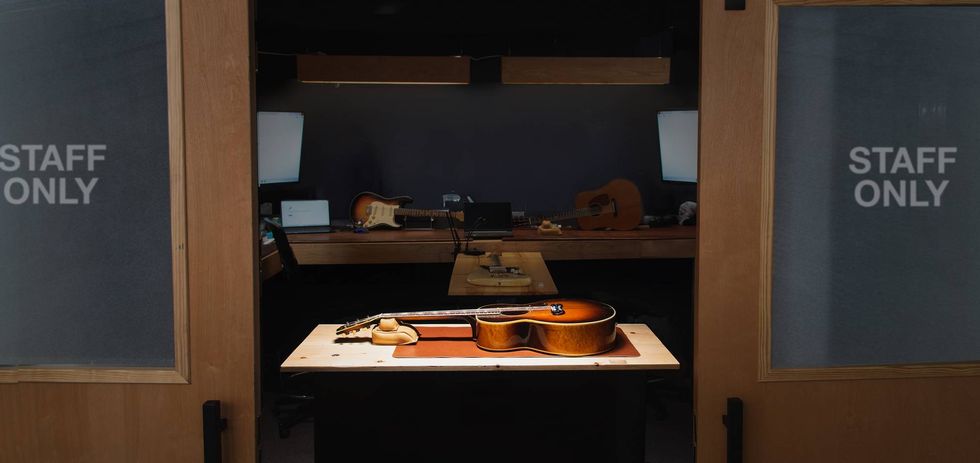Hello and welcome back to Mod Garage. Before I continue with the list of tone caps to try in your Strat (see part 1), I'd like to say a few words about the popular Luxe repro caps (luxeradio.com) that popped up on the market some years ago. These are faithful recreations to mimic the look of old vintage tone caps, and these guys are really doing a great job. I had some of them on the workbench and compared them carefully with the original caps. There is absolutely no difference in appearance—they really look like 50-year-old caps, and they even feel and smell like the old ones. But keep in mind that they are replicas, so they don't sound just like the originals. If you want the perfect vintage look inside your electronics compartment, this is the way to go. Don't get me wrong, the people at Luxe Radio & Musical Instrument Co. are doing everything to get their caps to sound close to the originals, so they are using the same type of construction. For example, the Luxe Bumblebee repro caps are vintage-masked, new old stock (NOS), Vitamin Q-style paper-in-oil caps from Russian military supply. These caps sound very good, but not exactly like an old “Bumblebee" or “Black Beauty."
OK, so let's continue with the list of tone caps you should try in your Strat.
Silver Mica
Silver mica caps are made from a dielectric of mica with a silver dip coating, hence the name. Modern silver mica caps are easy to identify because they have a typical hump in the middle of the body. NOS silver mica caps usually have a flat, rectangular shape. They can be found inside high-quality amps and stompboxes. They can also be used as an excellent high-cut cap on a guitar's volume pot. If you can find the correct value, they're also excellent as a cap for the tone control. Higher values are often hard to find, big in size, and very expensive—but worth a try. They really sound excellent, without any coloration. They'll improve a guitar's tone dramatically, and they'll improve top end and clarity due to their low-loss design—they're the absolute best-sounding caps for tone circuits, tone stacks, and filters. A good substitute for silver mica caps are the Styroflex caps I mentioned last month. They're much smaller in size, and therefore much easier to handle as a tone cap.
Paper-in-Oil (aka “PIO")
These caps from Jensen, Sprague (Vitamin Q), Mundorf, and some others can usually be found in high-end hi-fi equipment like audio power supplies, decoupling stages, and speaker crossover filters, as well as high-quality guitar amps. They are very expensive, but many swear by them. Naturally, you can use them inside a guitar if you have enough space for such a tone cap. These capacitors use oil-soaked paper as dielectric material and are therefore well damped and very transparent, smooth, defined, punchy, and natural sounding— bandwidth is very high and distortion very low. The very early Sprague Bumblebee caps from the '50s are PIOs, and they're easy to identify because of the blob at one of the leads. Plenty of NOS PIO caps are available, and they're excellent quality—some are even military graded—and they're often cheaper than caps from Jensen and others.
Mullard/Philips C280 “Tropical Fish"
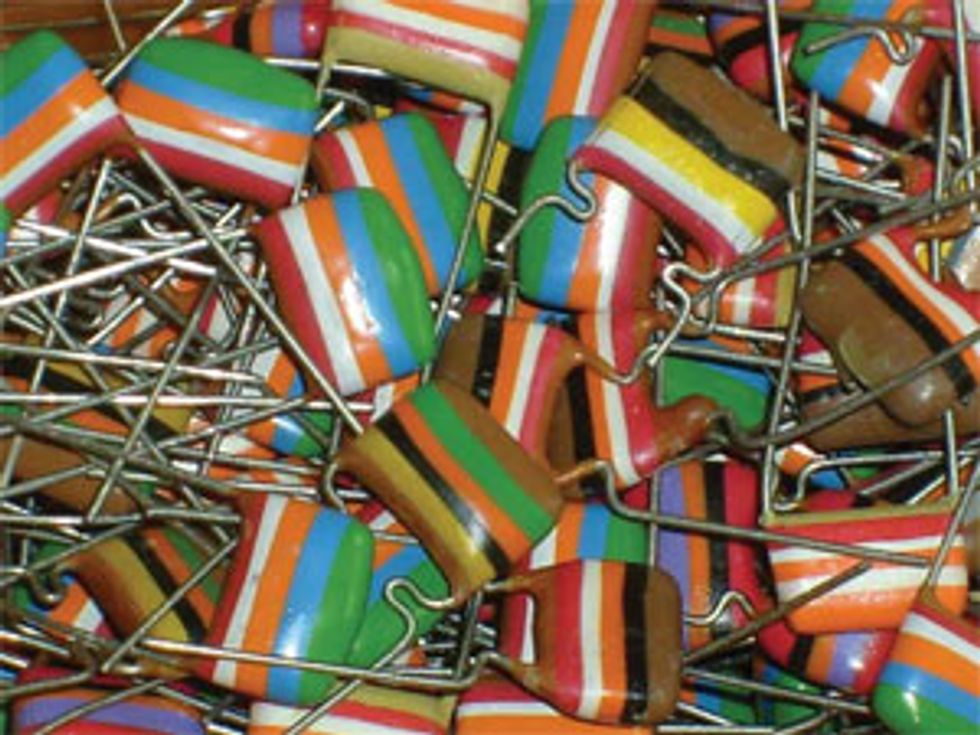 Mullard/Philips C280 “Tropical Fish" capacitors |
The Mullard/Philips C280 capacitor became widely known as the “tropical fish" cap because of its colorful stripes, which are used to indicate its value. This cap is a polyester film type from the late '60s, and you can find it in a lot of tube amplifiers and stompboxes from that era. It's the magical wah-wah cap as well, so this is your ticket to converting your modern wah pedal into a vintage tone machine. The “tropical fish" term is often mixed up with the Bumblebee caps, but this is simply wrong. These have been out of production for decades but are still available as NOS caps. They sound excellent in a Strat, offering a very fat tone that doesn't turn into mud with overdrive or distortion. Compared to the Orange Drop polyester film caps, these have more midrange and less high-end sizzle. If you have a thin-sounding Strat, they are worth a try.
Paper-Waxed (aka “PIW")
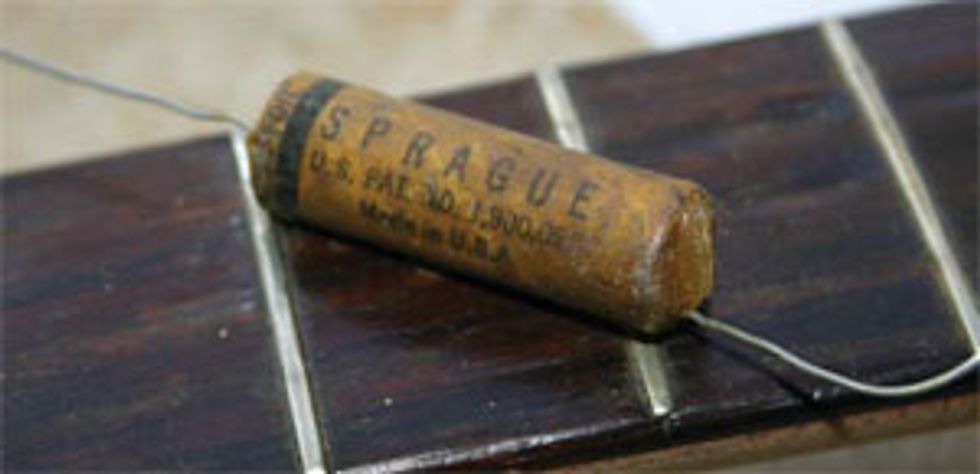 An example of a paper-waxed (aka “PIW") capacitor |
This type of cap is one of the earliest constructions and it's considered obsolete today. Paper capacitors are typically constructed of thin, flat strips of metal foil conductors that are divided by waxed paper. They're sealed with wax to prevent the harmful effects of moisture and to prevent corrosion and leakage. You can find this type of cap in very early tube radios, TVs, and guitar amps as well. Fender used this type (which usually looks like a thick, rectangular blob of wax) as a tone cap in the earliest Broadcasters, Esquires, Telecasters, and Stratocasters. At that time, the 0.1uF value was standard, and it provided a very dark and muffled tone (I refer to it as “clinically dead"). The choice of this value was Leo Fender's idea, to provide a “bassy" tone so the guitar player of a band could also play some bass lines if necessary. The most famous PIW tone cap in the guitar world is the tube-shaped Cornell-Dubilier “Grey Tiger" that Gibson used until 1956. Their construction aided and abetted a muffled tone with a dampened high-end and prominent bass and mid frequencies. Personally, I don't like the sound of these caps, but they are original equipment on the earliest Fender guitars—so if you want to duplicate the early vintage circuits, there's no way around them. The only application I would recommend for such a cap would be a very ice-picky, harsh-sounding Strat with tons of treble. These have been out of production for many years, but you can find them used (OS or “old stock") or NOS on eBay.
NOS “High Voltage" Ceramic
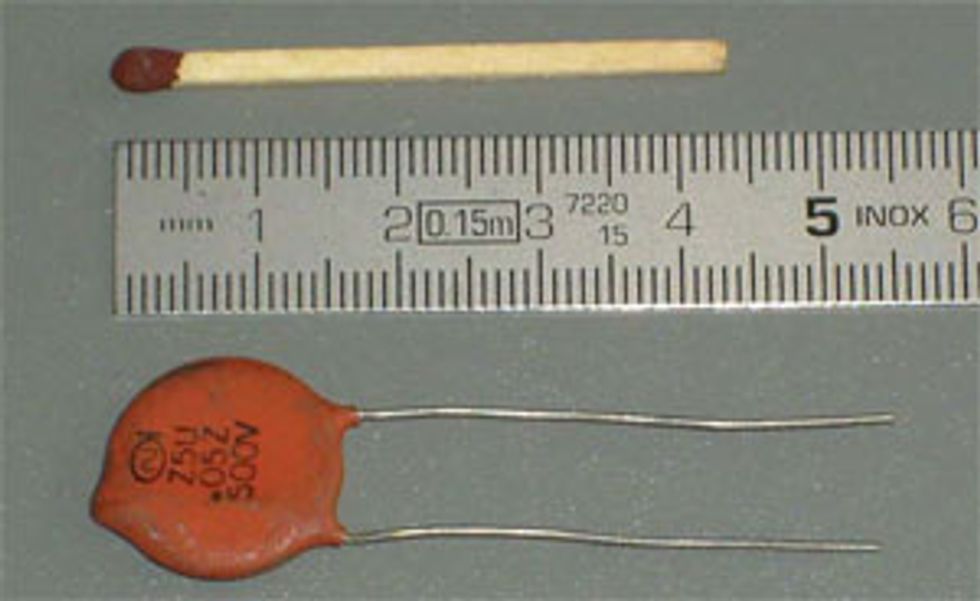 A NOS “high voltage" ceramic capacitor |
“High voltage" ceramic disc caps (aka “pancake caps") from companies like those from Sprague, Centralab, Waldom, Mepco, and Erie were the standard tone caps on all Fender guitars during the '60s and early '70s. They look like brown chocolate drops, and many of them have voltage ratings up to 1kV and even higher. They are out of production now, but some companies still stock NOS supplies of these excellent-sounding caps. Another option is to get some consumer electronic devices from that era, like old TVs and radios, and cannibalize them. To achieve true '60s vintage tone from your Strat, Tele, or P- or J-Bass, there's no way around the original. They sound totally different from the modern ceramic caps. The difference really is stunning, and there are several theories as to why they sound so good. From a technical point of view, these caps are far from being perfect as capacitors, so lots of harmonics and upper tones pass through without being blocked—which is why most people say they sound excellent. They're among my favorite caps as well, and often they are the difference between a very good-sounding guitar and a fantastic-sounding guitar. I've tried lots of modern ceramic caps, but nothing even comes close to the old ones. If you can get some of these, do!
All right, that's it. Many more tone caps are available, but it wasn't my intention to make an exhaustive list. I wanted to focus on the caps that work well in a Strat. NOS Bumblebee caps, for example, don't sound very good in Fender guitars, so we'll talk about these caps when we switch over to the Les Paul and 335 mods. Next month, we'll close this chapter by discussing the orientation of caps. I'm sure there will be some surprises in store. Until then... keep on modding!
Dirk Wacker
Dirk Wacker lives in Germany and has been addicted to all kinds of guitars since age five. He is fascinated by anything to do with old Fender guitars and amps. In his spare time he plays country, rockabilly, surf and Nashville styles in two bands, works part-time as a studio musician for a local studio and writes for several guitar mags. He is also a confessing hardcore DIY guy for guitars, amps and stompboxes and runs an extensive webpage, singlecoil.com, about these things.










